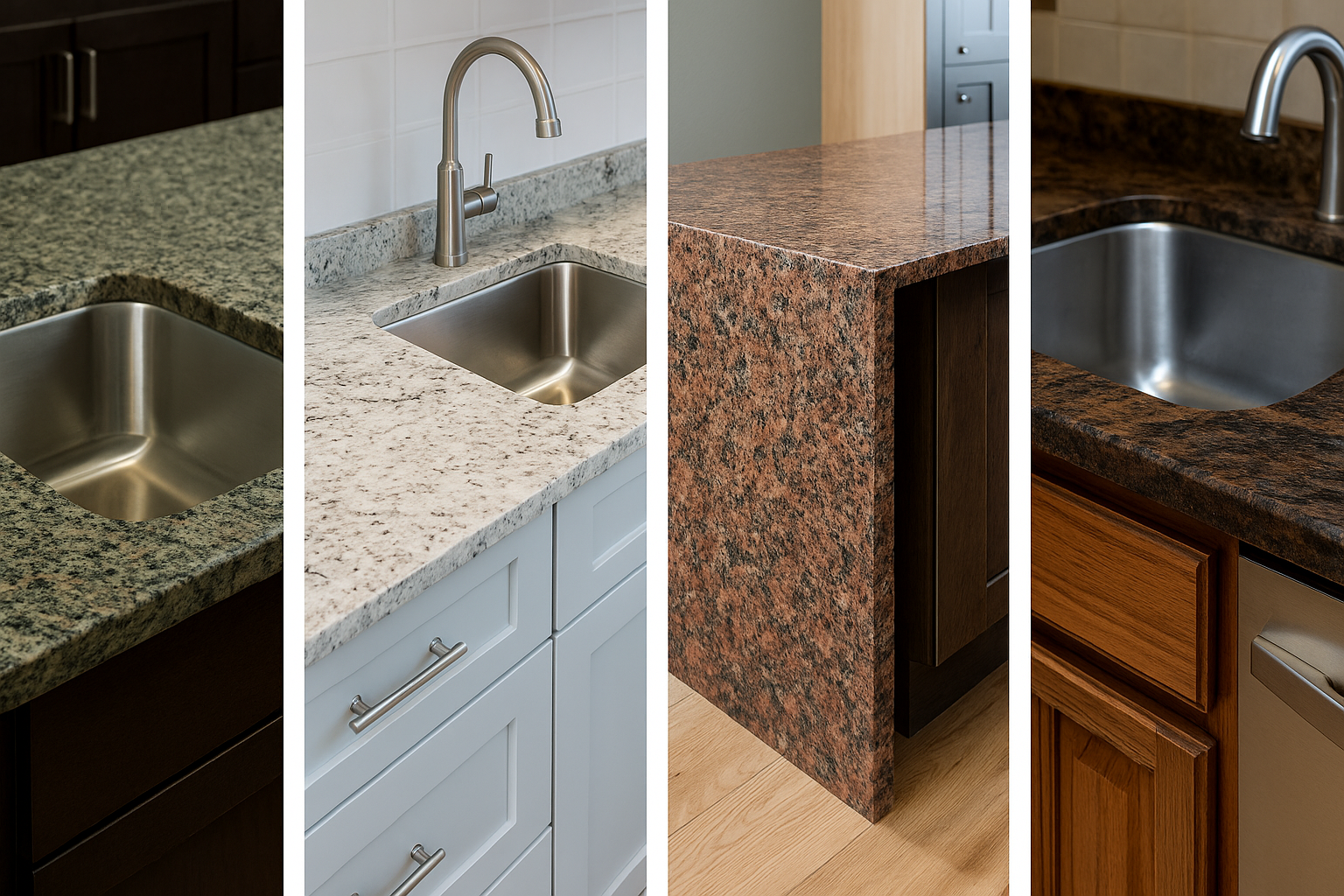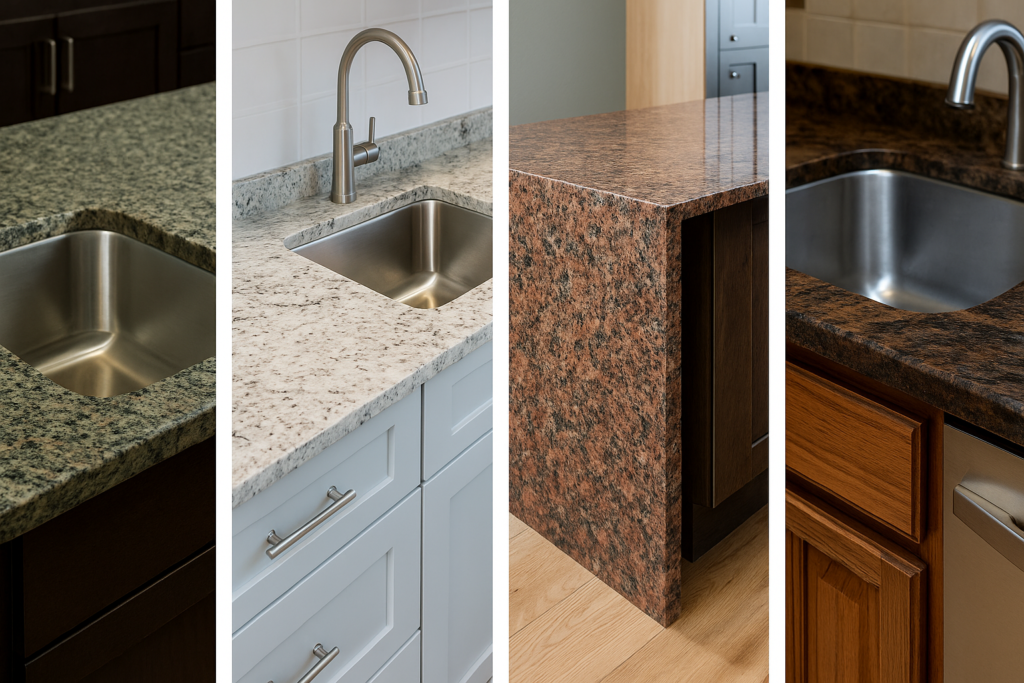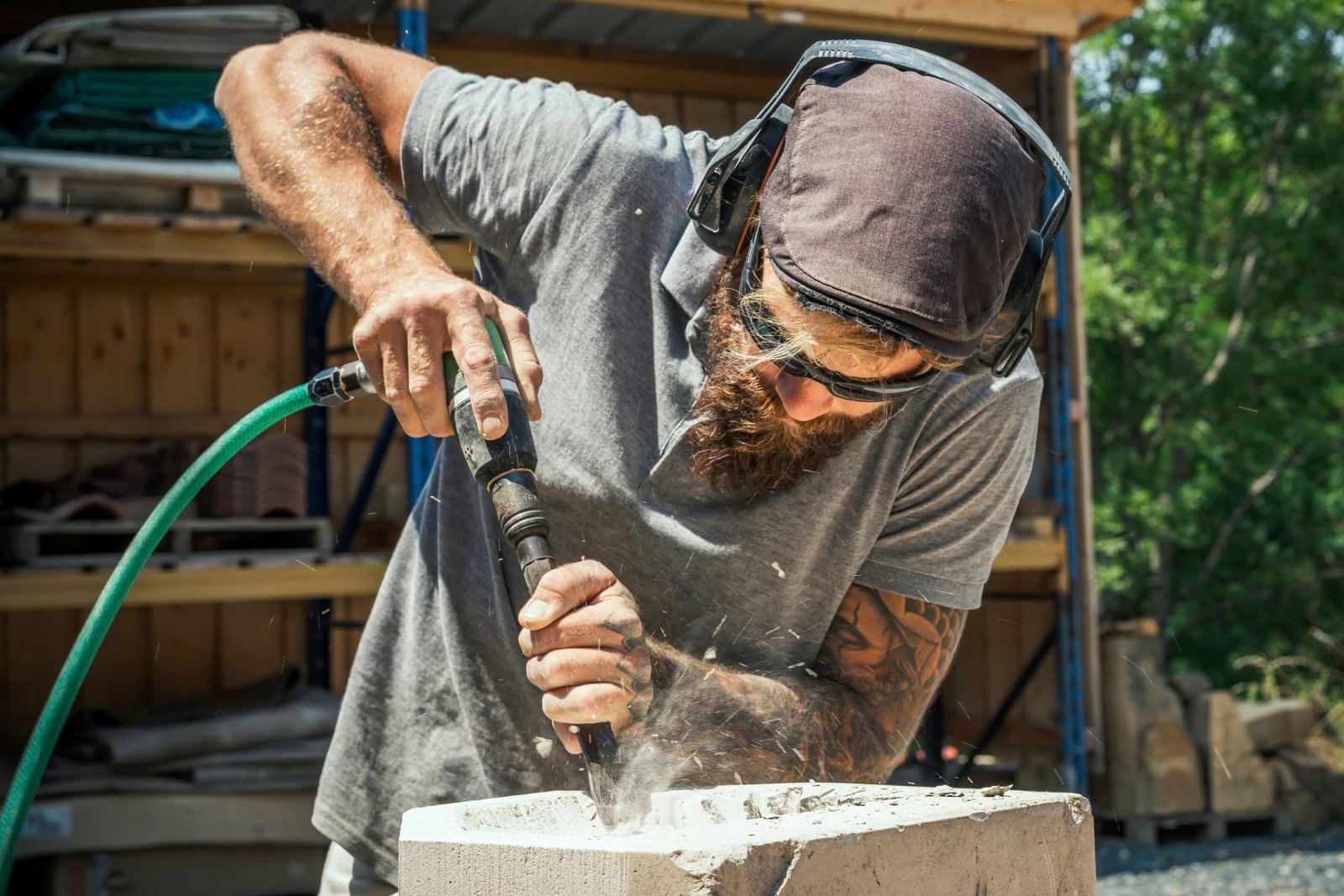
The granite countertop remains a timeless favorite in modern and traditional interior design.
The granite countertop remains a timeless favorite in modern and traditional interior design. Whether you’re renovating a kitchen, upgrading a bathroom, or designing a luxury villa, how you install the granite makes a big difference in both aesthetics and functionality.
With various installation styles available, homeowners and designers can tailor their granite countertop design to match cabinetry, flooring, lighting, and lifestyle needs. This guide explores the most common installation styles for granite countertops, their unique advantages, and how to select the best one for your space.

Why Installation Style Matters for Granite Countertops
Choosing a granite countertop involves more than selecting a color or edge finish. The way it’s installed impacts:
- Visual flow and balance
- Space optimization
- Accessibility and comfort
- Countertop installation cost and labor
- Long-term durability and maintenance
By understanding the common installation methods, you can ensure your granite not only looks stunning but performs well over time.
1. Drop-In or Overmount Installation
In a drop-in (or overmount) installation, the granite slab is cut to accommodate a sink or cooktop that drops into the opening, with its rim resting on top of the granite.
Features:
- Easy to install and replace sinks
- Ideal for traditional or transitional kitchens
- Lower installation cost
Best Use:
- Rental properties, laundry rooms, or budget-conscious renovations
2. Undermount Installation
One of the most popular styles in modern kitchens and bathrooms, undermount installation involves mounting the sink below the granite surface for a seamless edge.
Benefits:
- Easy countertop cleaning—just wipe debris into the sink
- Sleek and elegant appearance
- No exposed sink rim
Considerations:
- Requires strong adhesive and precise countertop installation
- Typically works with 3cm (1¼ inch) thick granite
👉 What Are the Benefits of Combining LED Lighting with a Granite Countertop?
3. Flush-Mount Installation
In a flush-mount style, the sink or cooktop is installed so it sits at the same level as the granite countertop, creating a seamless transition.
Advantages:
- Ideal for ultra-modern and minimalistic designs
- Provides a continuous working surface
- Sleek, high-end aesthetic
Challenges:
- Requires expert fabrication
- Not all appliances or sinks are compatible
4. Waterfall Edge Installation
In this stunning style, the granite continues vertically down the sides of cabinets or an island, creating the appearance of a flowing “waterfall.”
Design Impact:
- Adds architectural drama to any kitchen
- Highlights unique veining and granite countertop colors
- Ideal for open-plan layouts or high-end villas
Tip:
- Best suited for exotic or premium granite slabs with strong patterns
5. Peninsula and Breakfast Bar Installations
For multifunctional kitchen spaces, extending the granite into a peninsula or breakfast bar adds both seating and surface area.
Popular in:
- Open kitchens
- Family homes
- Entertaining zones
Features:
- Overhang supported by corbels or brackets
- Can incorporate rounded corners or beveled edges
6. Granite Backsplash Integration
Installing a short or full-height granite backsplash adds elegance and protects the wall from spills and splashes.
Options:
- 4-inch granite backsplash: Subtle, classic style
- Full-slab backsplash: Dramatic, seamless look that matches the counter
This installation choice is excellent for modern kitchens with bold granite countertop design.
👉 What Colors of Granite Countertop Go Well with Modern Cabinets and Flooring?
7. Island Installations
Granite islands serve as both prep zones and statement pieces. The installation style depends on the shape, size, and purpose of the island.
Styles:
- Single-slab islands with waterfall edges
- Multi-level islands for dining and cooking
- Curved or L-shaped granite designs
Lighting and cabinetry should be coordinated for maximum visual impact.
8. Butler Pantry and Utility Surface Installations
For secondary spaces like butler pantries or mudroom counters, simple granite countertop installation methods with clean edges offer durability and function.
Best Choices:
- Straight edges for easy cleaning
- Lower-cost granite slabs in neutral tones
- Undermount or drop-in sinks depending on use
These functional spaces benefit from granite’s stain resistance and minimal granite countertop maintenance.
9. Outdoor Kitchen Installation
Granite is durable enough for outdoor installations—ideal for grilling stations, outdoor bars, or garden kitchens.
Requirements:
- Proper sealing to resist weather
- 3cm thickness for strength
- Use of granite countertop colors that won’t fade in UV exposure
This installation style requires planning for drainage and temperature variation.
10. Floating or Wall-Mounted Granite
In modern bathrooms or vanities, floating granite shelves or wall-mounted countertops create a sleek, space-saving design.
Benefits:
- Open space beneath for minimalist aesthetics
- Ideal for small rooms
- Can be backlit for dramatic effect
Considerations for Choosing a Granite Installation Style
When choosing the right installation style, think about the following:
- Budget: Complex styles like waterfall or flush-mount increase granite countertop prices
- Space: Small spaces may benefit from floating or integrated backsplash styles
- Maintenance: Simpler styles are easier for granite countertop cleaning
- Functionality: Choose drop-in for utility, undermount for luxury, waterfall for design
Final Thoughts: Match Your Installation Style to Your Design Goals
Your granite countertop installation style should complement your interior layout, support your daily habits, and elevate your aesthetic vision. Whether you’re designing a cozy home kitchen or a set of high-end adjacent villas, installation choices can transform a basic slab into a design masterpiece.
From minimal undermounts to bold waterfall edges, granite adapts to any design language—and with proper countertop installation, it can last for decades.

